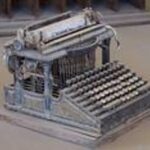I am continuing my set of articles on recent medical tests for heart issues. I am hoping that this might help others who are facing the same or similar situations. Dealing with potential heart problems is scary enough. However, not understanding the tests, how they work, and their benefit makes the situation scarier still.
Most people are familiar with the standard Electrocardiogram (EKG) so I’m not going to go into that. The EchoCardiogram (ECG) is a more closely related to a Sonogram than a standard EKG, although both are used to take a look at what is happening within the heart.
The ECG uses ultrasound to provide a dimensional image of the heart as well as what is referred to as an M-Echo, which is used to measure the organ’s chambers. This gives the physician a two-dimensional picture of the beating heart and the left and right ventricles.
Both the ECG and EKG involve electrodes that are put onto the patient via a patch. These provide messages from the heart back to the machine to let the physician know the timing of the heart’s movement as blood filters into and out of the organ.
Next a gel is applied to the echo microphone, which is called a transducer. It is then moved around the heart in various positions – – right, inside part of the chest; underneath the left breast; at the top of the abdomen; and at the top of the collarbone. This allows the doctor to see the heart from all four positions; left, right, top, and bottom.
Generally the patient lies flat on his or her back during the procedure. However, sometimes he or she may be ask to turn over on the left side in order to get a better picture of the heart from that angle.
For the most part, the person conducting the test does all of the work. However, the patient may be asked to take deep breaths from time to time or to sniff as though they have a cold. This helps the tester to see how the heart responds in those instances and whether such actions have any impact or stress on the heart or lungs.
Just like with an EKG, readings are printed on paper. They are also generally put onto videotape and/or audiotape for the physician to view or listen to.
An ECG can be useful in determining whether or not the heart is properly pumping and, if not, help determine where the problem(s) might lie. If a heart attack has occurred, the test may also reveal that the heart is not moving properly.
The ECG can determine if the heart has a “bulge,” which could indicate a probable an aneurysm. In some instances it can even tell whether it is new or something that resulted from an old heart attack or disease.
The ECG is also useful in determining the condition of the heart valves. In my case, they were checking to make certain there had been no additional tearing of my mitra valve, thereby causing serious leakage. However, it can also work to determine if there is any narrowing of the valve opening.
The test can show the doctor if the valve appears normal or is damaged in some way. In my case, it had been torn as a result of Rheumatic Fever as a child. It can also advise if the valves are leaking and, if so, how bad the leakage might be.
The ECG is useful in a myriad of other ways as well. It can help to diagnose congenital heart problems, tumors, possible blood clots, and even infection.
The test is relatively simple and can be performed out patient without much difficulty. It does not require the patient to wear special clothing although it will require removal of shirts for men and/or removal of brassieres and, as a minimum, unbuttoning of blouses for women. The technician must have full, unobstructed access to the chest area at all times. Gowns or sheets are always provided for modesty reasons.
The test is perfectly safe and painless. It usually only takes between 15 and 30 minutes. It can take a bit longer if there appears to be a problem, if the patient is obese, or if there is significant scaring due to old surgery or injury.
If a physician conducts the test, he or she may be able to give you immediate answers regarding its results. However, an ECG is often run by a specially trained technician who then turns the results over to a physician for analysis.
My test was quick – – about 15 minutes – – and easily revealed no further damage to my mitra valve. No mess; no fuss; and no more worry. As a patient, you’ve got to love that!




